Birdfinding.info ⇒ Among the most familiar and iconic North American birds, the Blue Jay has been adopted as the mascot of sports teams including Toronto’s major league baseball franchise and Johns Hopkins University. It is generally common and conspicuous throughout southern Canada and the U.S. from the Great Plains to the Atlantic (see Breeding Bird Survey Abundance Map in Notes below), and regularly attends backyard bird feeders.
Blue Jay
Cyanocitta cristata
Central and eastern North America.
Inhabits a wide variety of wooded and semiopen habitats from northeastern British Columbia to Newfoundland, south along the Rocky Mountain foothills to eastern New Mexico, and generally throughout the central and eastern U.S. to southern Texas and southern Florida. Adapts readily to human development, including agricultural and urban areas.
Partly migratory, as significant numbers can be seen moving north in spring and south in fall along migratory corridors in the Great Lakes, Appalachians, and Mid-Atlantic coast. Nevertheless, the summer and winter ranges are essentially the same—as some portion of the population remains on or near the northernmost breeding areas year-round and wintering birds do not migrate any significant distance south of the southernmost breeding areas.
In winter, strays annually west of its usual range in British Columbia and across the Pacific Northwest south to northern California and northern Utah, and exceptionally farther south.
Has been recorded once as a vagrant on Bermuda, but otherwise apparently never recorded outside the U.S. and Canada.
Identification
A loud flashy, conspicuously blue jay (hence the name) that is familiar throughout its range.
The crown, nape, and back vary from pale pastel or lilac to vivid sky-blue, and the wings and tail are a bright blend of turquoise and sapphire with black barring and broad white tips.
The underparts vary from white to gray, typically pure white on the lower belly and ashy-gray across much of the breast.
The head has a prominent peaked crest and an irregular black crescent that extends from the hindcrown to the upper chest, forming a necklace.
The face varies from whitish to pale-blue, with black markings around the eyes and forehead.

Blue Jay. (Whitefish Point, Michigan; May 12, 2016.) © Zak Pohlen
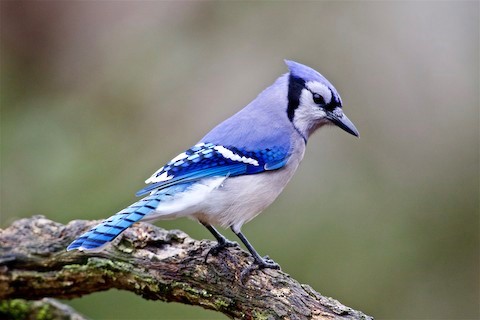
Blue Jay with typically bright blue upperparts. (Beaver Dam, Wisconsin; March 28, 2020.) © Jack & Holly Bartholmai
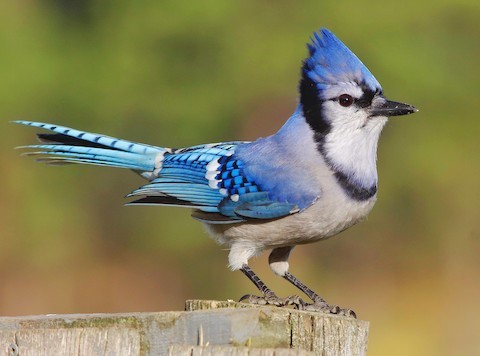
Blue Jay with crest fully raised. (West Kelowna, British Columbia; October 26, 2018.) © James Jansen
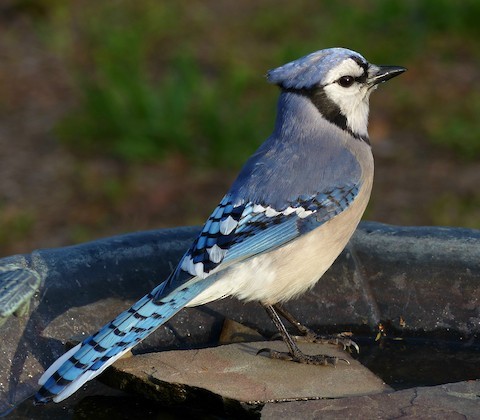
Blue Jay with white face, showing turquoise tones in wings and tail. (Toms River, New Jersey; May 1, 2017.) © Shawn Wainwright
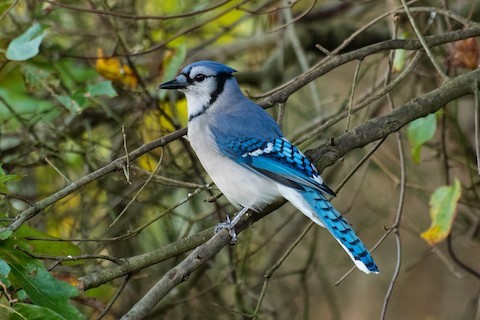
Blue Jay with crest held flat. (Cape Henlopen State Park, Delaware; October 15, 2020.) © Don Danko

Blue Jay with crest held flat. (Cross Lake Provincial Park, Alberta; November 23, 2019.) © Gerald Romanchuk
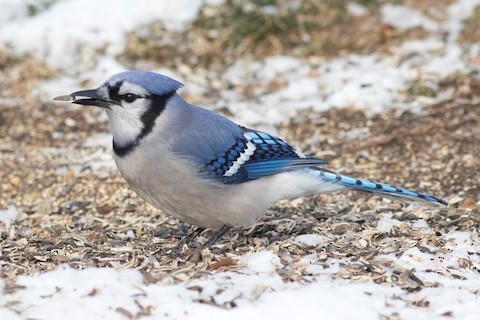
Blue Jay. (Montoursville, Pennsylvania; December 15, 2016.) © David Brown
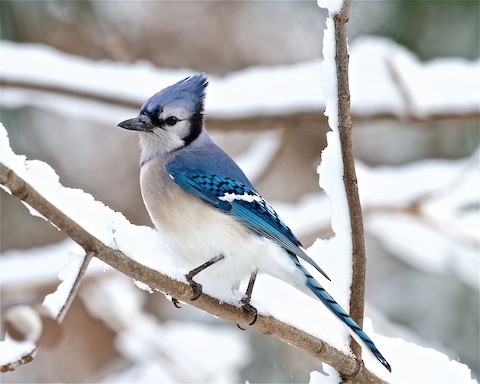
Blue Jay with crest raised. (Beaver Dam, Wisconsin; January 1, 2019.) © Jack & Holly Bartholmai
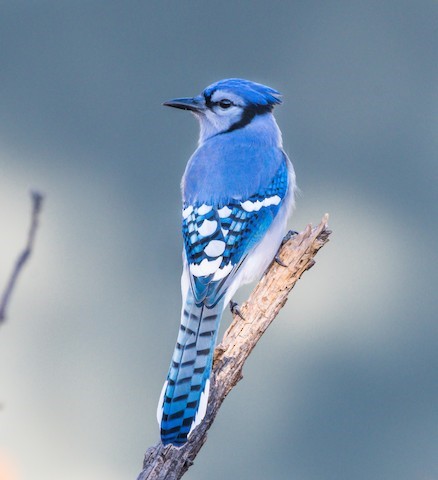
Blue Jay. (Red Rock Canyon, Colorado; November 5, 2019.) © Jim Merritt
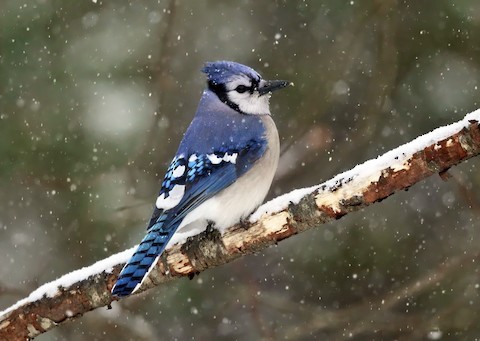
Blue Jay. (Groton, Massachusetts; March 14, 2017.) © Tom Murray
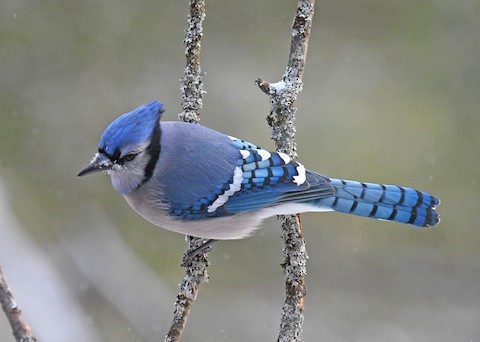
Blue Jay. (Leonard Lake, Ontario; February 28, 2020.) © Michael Hatton

Blue Jay. (Le Domaine-du-Roy, Quebec; February 3, 2017.) © bellemare celine
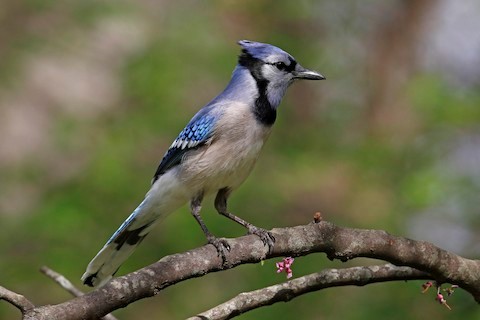
Blue Jay with atypically wide black collar and bluish face. (Overton Park Arboretum, Kansas; May 6, 2018.) © Donna Pomeroy

Blue Jay. (South Starksboro, Vermont; May 21, 2019.) © Henry Trombley
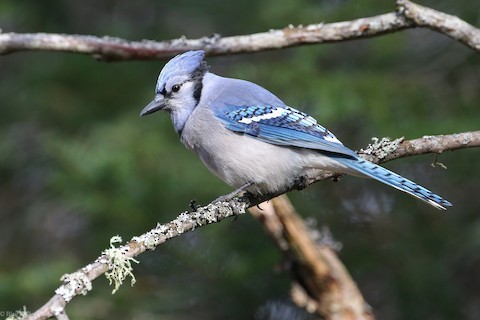
Blue Jay with a blue tinge on its face. (Algonquin Provincial Park, Ontario; November 5, 2020.) © Blair Dudeck
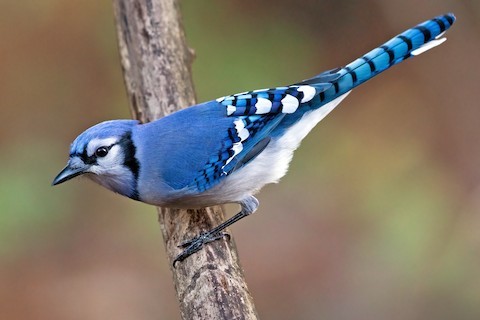
Blue Jay at or near maximum blue vividness. (Welsh Hills, Ohio; October 31, 2020.) © Brad Imhoff

Blue Jay with atypically extensive black markings on its face. (Saskatoon, Saskatchewan; September 28, 2017.) © Nick Saunders

Blue Jay. (Washington, Michigan; June 10, 2019.) © Andrew Simon
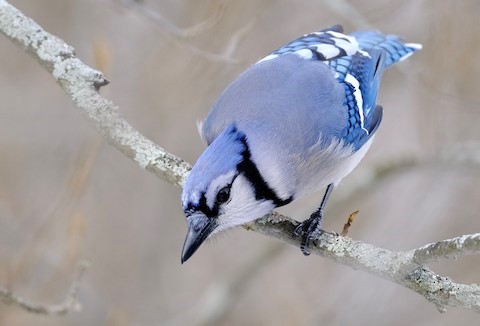
Blue Jay, showing lilac tones on the upperparts. (Lemoine Point Conservation Area, Kingston, Ontario; January 30, 2020.) © Marlene Kraml

Blue Jay. (Kensington Metropark, Oakland County, Michigan; January 6, 2018.) © Joe Kwasniewski

Blue Jay. (Queen Anne’s County, Maryland; January 24, 2020.) © Jonathan Irons
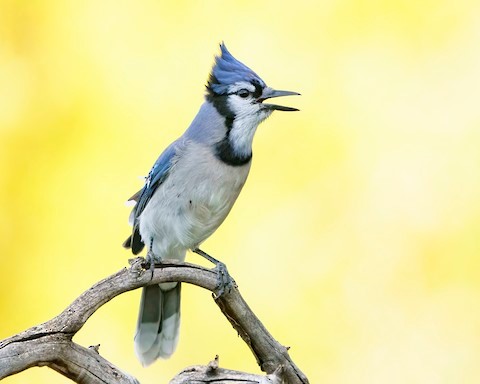
Blue Jay. (Richland, Washington; October 16, 2020.) © Lisa Hill
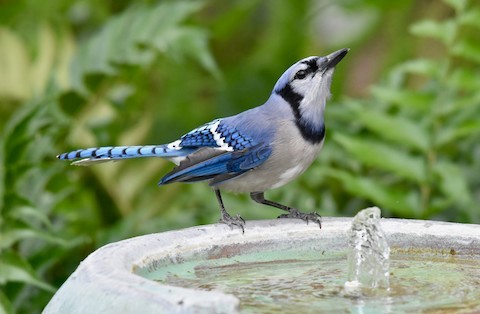
Blue Jay. (Sugar Land, Texas; March 15, 2019.) © Bill Schneider
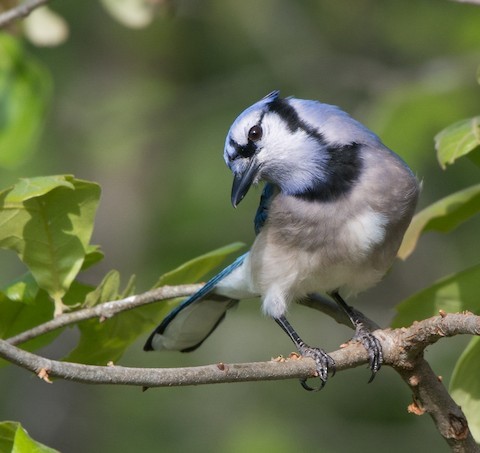
Blue Jay. (Big Rock Township, Arkansas; April 30, 2018.) © Susan Williamson
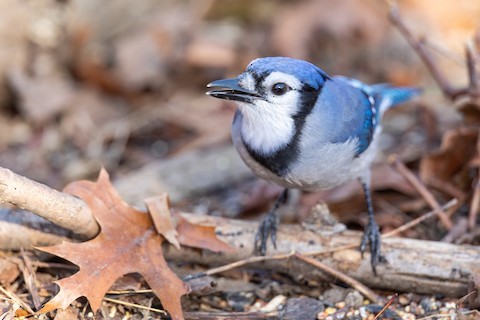
Blue Jay. (Eagle Creek Park, Indianapolis, Indiana; December 8, 2019.) © Ryan Sanderson
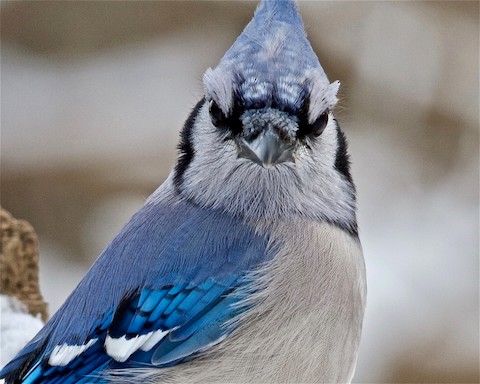
Blue Jay, face-to-face close-up. (Beaver Dam, Wisconsin; January 1, 2019.) © Jack & Holly Bartholmai
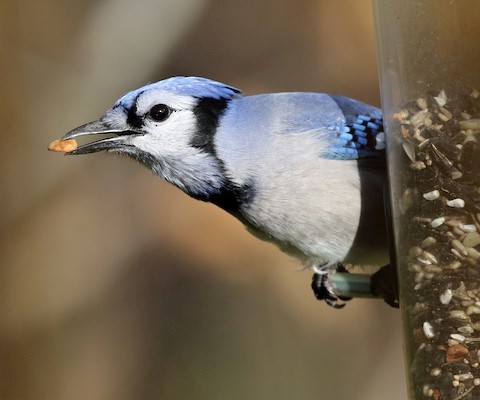
Blue Jay. (London, Ontario; October 20, 2020.) © Laure Wilson Neish
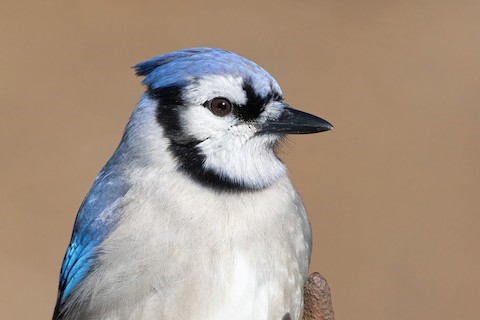
Blue Jay. (Royalston, Massachusetts; January 24, 2021.) © Sam Zhang

Blue Jay. (Peace Valley Park, Bucks County, Pennsylvania; January 1, 2021.) © Joel Marcinik
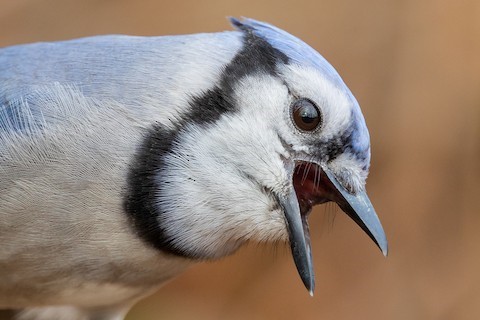
Blue Jay. (Eagle Creek Park, Indianapolis, Indiana; December 8, 2019.) © Ryan Sanderson

Blue Jay. (Eagle Creek Park, Indianapolis, Indiana; December 8, 2019.) © Ryan Sanderson
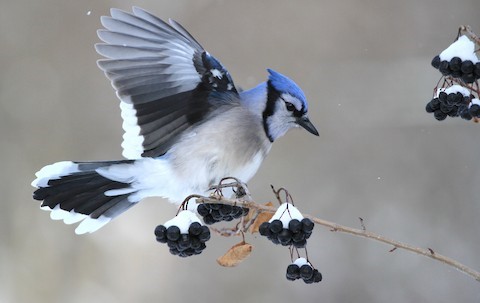
Blue Jay showing undersides of spread wing and tail. (Les Collines-de-l’Outaouais, Quebec; November 12, 2019.) © Diane St. Jacques
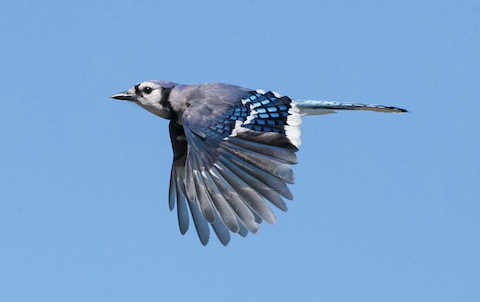
Blue Jay in flight showing upperside of spread wing. (The Bluff, St. Joseph, Ontario; June 8, 2019.) © Brandon Holden
Notes
Polytypic species consisting of four recognized subspecies.
References
Alderfer, J., and J.L. Dunn. 2014. National Geographic Complete Birds of North America (Second Edition). National Geographic Society, Washington, D.C.
BirdLife International. 2016. Cyanocitta cristata. The IUCN Red List of Threatened Species 2016: e.T22705611A94027257. https://dx.doi.org/10.2305/IUCN.UK.2016-3.RLTS.T22705611A94027257.en. (Accessed January 30, 2021.)
eBird. 2021. eBird: An online database of bird distribution and abundance. Cornell Lab of Ornithology, Ithaca, N.Y. http://www.ebird.org. (Accessed January 30, 2021.)
Howell, S.N.G., and S. Webb. 1995. A Guide to the Birds of Mexico and Northern Central America. Oxford University Press.
Kirwan, G.M., A. Levesque, M. Oberle, and C.J. Sharpe. 2019. Birds of the West Indies. Lynx Edicions, Barcelona.
Salt, W.R., and J.R. Salt. 1976. The Birds of Alberta. Hurtig Publishers, Edmonton, Alberta.
Sibley, D.A. 2000. The Sibley Guide to Birds. Alfred A. Knopf. New York.
Xeno-Canto. 2021. Blue Jay – Cyanocitta cristata. https://www.xeno-canto.org/species/Cyanocitta-cristata. (Accessed January 30, 2021.)


